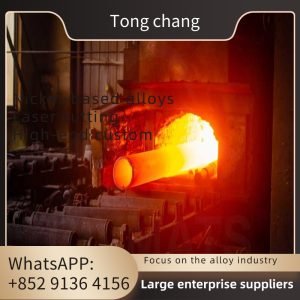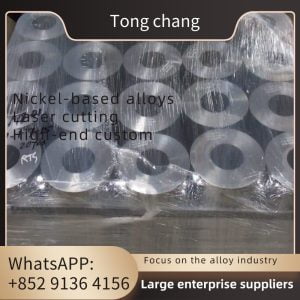| Material Grade: | F304, F304L , F304H, F304/304L , F304N,F316. F316L, 1.4541 | Size: | Depend On Client Request |
|---|---|---|---|
| NDT: | UT, PT , MT | Application: | Heat Exchanger, Boiler, Pressure Vessel, Chemical Reactor, Power Plant, Energy , Petrochemical |
| High Light: | EN10028 Heat Exchanger Components Tube, 1.4541 Heat Exchanger Components Tube | ||
ASME A182 SA 266 Cl. 2 SS321 EN10028 1.4541 Heat Exchanger Components Tube Sheet , Chemical reactor application, 100% UT /PT
What Is a Tube Sheet for a Heat Exchanger?
Tube sheets have holes drilled to accept a series of tubes inside of an enclosed tubular pressure vessel. These pressure vessels, commonly referred to as shell and tube heat exchangers, are the most common heat exchangers used in oil refineries and large chemical plants. The tube sheet itself serves as a supporting element in heat exchangers and boilers. The tube sheet is called this because the tubes–which are carefully arranged in a specific pattern–penetrate the tube sheet in multiple places to allow the fluid within these tubes to flow in and out of the heat exchanger. The fluid flowing through the tubes within the shell exchanges heat with the fluid that flows into the shell but flows past the outside of the tubes exchanging the heat with the tube fluid.
Tubesheet Analysis Method
Displays the standard to use for analysis:
TEMA – Tubular Exchanger Manufacturers Association
ASME – ASME Section VIII, Division 1, Section UHX or ASME Section VIII, Division 2, Part 4
The option selected in Design Code determines whether the software uses Division 1 or Division 2.
PD 5500 (British Code) – British Pressure Vessel Code, Section 3.9, Flat Heat Exchanger Tubesheets
EN-13445
Exchanger Type
Select the type of heat exchanger.
U-Tube has only one tubesheet. The tubes are bent in the form of a "U." The bundle can removed for maintenance, but the inside of the tube is harder to clean because of the bend.
Fixed has two tubesheets that are fixed at each end of the exchanger and are connected to each other by straight tubes. Both the tubesheets are stationary, so differential thermal expansion can develop between the shell and the tubes. An expansion joint is sometimes required to absorb the thermal growth. You must select a fixed type of tubesheet exchanger to perform finite element analysis (TONG CHUANG) on expansion joints.
Floating has one tubesheet that is fixed (stationary) and one that is free to move. Because one tubesheet floats, any differential thermal expansion between the shell and tubes is absorbed. This category of exchangers is the most versatile and also the costliest. Tubes can also be cleaned easily compared to U-tube exchangers.
| Carbon & Low Temperature | Chromiun | Stainless & Duplex | Copper& Bronze | Titanium | Ni-Alloy | |
| A105 /A105N | A182-F1 | A182-F304 | A182-F347H | SB151-C70600 | SB381-GR.1 | B564-NO2200 |
| A516-GR.70 | A182-F11 | A182-F304L | A182-F904L | SB151-C71500 | SB381-GR.3 | B564-NO6022 |
| A350-LF2 | A182-F12 | A182-F304H | A182-F44 | SB151-C71520 | SB381-GR.5 | B564-N10276 |
| A182-F22 | A182-F304N | A182-F51 | C44300 | SB381-GR.7 | B564-NO4400 | |
| A182-F5 | A182-F309S | A182-F53 | C68700 | SB381-GR.12 | B564-NO6600 | |
| A182-F9 | A182-F310S | A182-F55 | C71640 | B564-NO6601 | ||
| A182-F91 | A182-F310H | A182-F60 | B564-NO6625 | |||
| A182-F316 | B564-NO8800 | |||||
| A182-F316L | B564-NO8810 | |||||
| A182-F316Ti | B564-NO8811 | |||||
| A182-F316H | B564-NO8825 | |||||
| A182-F317L | B564-N10665 | |||||
| A182-F321 | B564-N10675 | |||||
| A182-F321H | B160-NO2201 | |||||
| A182-F347 | B462-NO8020 | |||||







